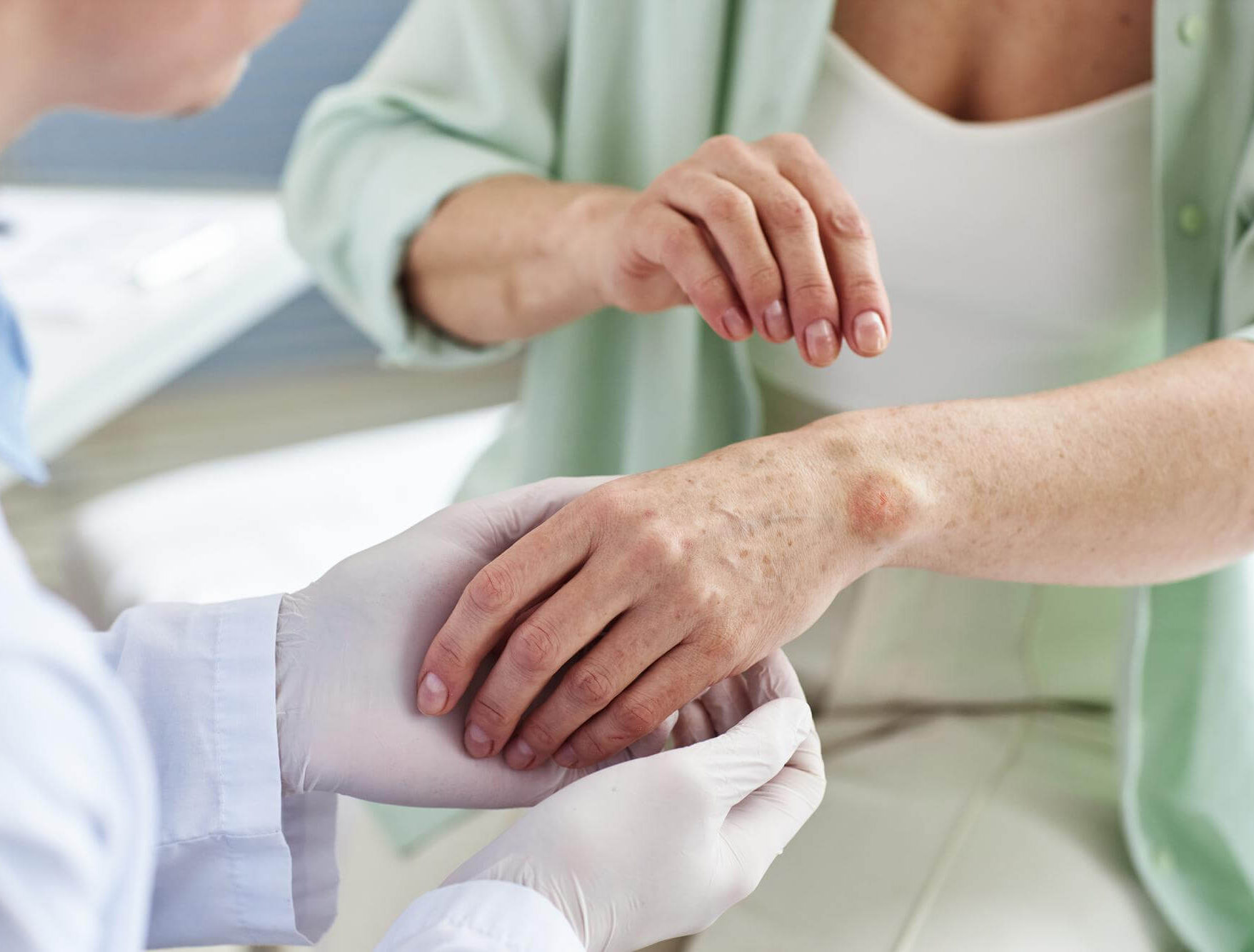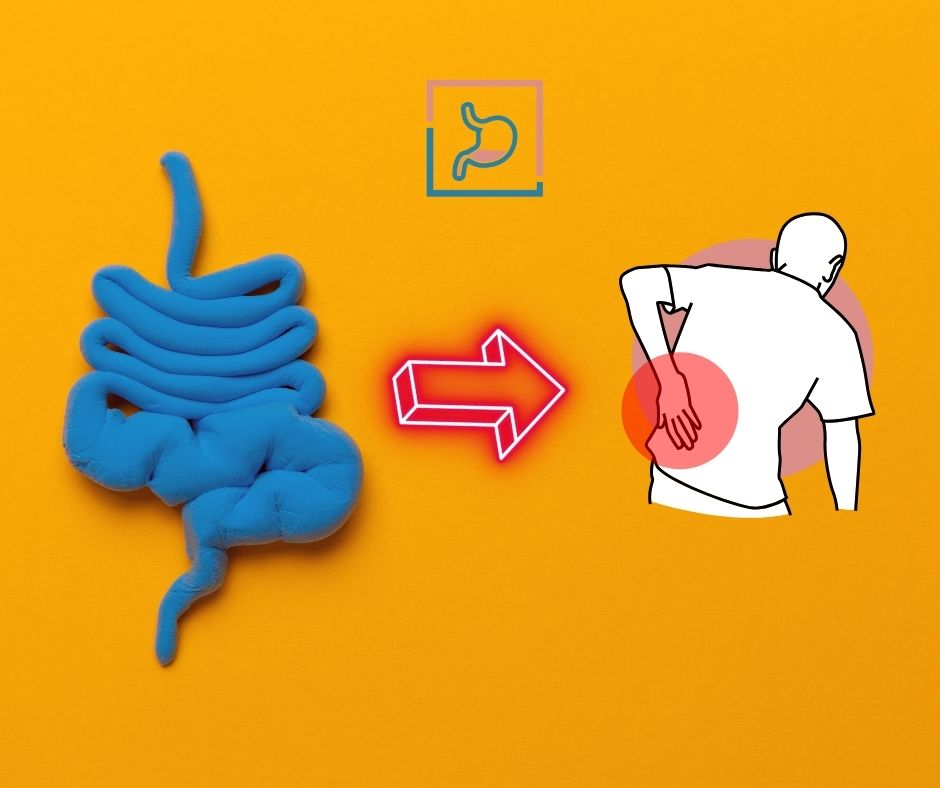Irritable bowel syndrome (IBS) may be to blame for your back pain, particularly lower back pain during the night. It’s essential to treat the root cause of your back pain, instead of masking the symptoms with pain blockers.
Most of our patients with IBS will find relief from their symptoms, including abdominal and back pain (if connected to their IBS symptoms), within several months of working with us.
It’s important to understand the connection between IBS and back pain. Below, we’ll discuss the relationship in detail and the most effective treatments.
At PrimeHealth’s integrative clinic in Denver, Colorado, we’ve treated people just like you who have IBS. By addressing the underlying cause, we have permanently reversed many patients’ IBS symptoms.
Why Does IBS Cause Back Pain?
IBS may cause abdominal pain, cramping, gas, diarrhea, and constipation, but it may also cause referred back pain. “Referred pain” is discomfort felt in a different part of the body from where the pain originated.
For example, IBS pain comes from bloating in the gut, but it may be felt in the back.
What part of the back hurts with IBS? IBS back pain is most often felt in the lower back, since this referred pain often originates in the gut, which is closest to the lower spine.
IBS stands for irritable bowel syndrome. It’s a digestive tract condition that has multiple possible root causes. IBS symptoms, such as bloating and back pain, may flare up due to dietary triggers or stress.
What are the symptoms of an IBS flare-up? An IBS flare-up is primarily characterized by symptoms such as:
- Stomach pain
- Flatulence
- Cramping
- Diarrhea
- Constipation
- Low back pain
At least 15% of Americans experience IBS (females are more at risk), but that number is larger if you include undiagnosed individuals. The prevalence of how many IBS sufferers have back pain is difficult to pin down, but as many as 80% of IBS patients may experience referred back pain.
Another possibility of how IBS causes backache is that people with IBS commonly experience other chronic pain conditions simultaneously. These comorbidities, such as interstitial cystitis, fibromyalgia, or rheumatoid arthritis, may also result in back muscle pain.
Read more: How Long Does IBS Last?
Diagnosing IBS
To treat and prevent IBS back pain, you must diagnose the root cause of IBS according to your unique situation.
IBS disrupts the normal functioning of the digestive system and gastrointestinal tract. The intricate gut-brain connection plays a crucial role in exacerbating symptoms, as stress and emotional factors can contribute to IBS manifestations.
At PrimeHealth, our team of doctors diagnose IBS with more thorough testing and more meaningful questions than most conventional doctors.
Get the most powerful probiotics available for a happy gut. Get 15% off Microbiome Labs when you use our link and coupon code PrimeHealth.
How do I know if I have IBS? You know you have IBS if you get an IBS diagnosis. IBS diagnostics may include a detailed symptom questionnaire, blood tests, urine tests, stool tests, and SIBO (small intestine bacterial overgrowth) breath tests.
You may be asked about family history of gastrointestinal disorders like colon cancer or inflammatory bowel disease (IBD). IBD is a group of autoimmune diseases that impact the gut, including Crohn’s disease and ulcerative colitis. IBD may inflame the spine and cause back pain.
The Rome IV Criteria recommends that an IBS diagnosis should be based on the following:
- Abdominal pain at least 1 day a week for 3 months
- Abdominal pain associated with stool frequency or appearance
- If “diarrhea” and/or “constipation” would correctly characterize at least 25% of your bowel movements
Wherever you go for your healthcare, make sure you get a proper diagnosis. IBS often presents with common symptoms that are misdiagnosed. You need a doctor who will listen to you and listen to your body.
Treating IBS to Treat Back Pain
What relief can IBS sufferers get for back pain? IBS treatment depends on the root cause. Once you diagnose the underlying cause of your IBS symptoms, take the appropriate treatment.
Since the gut produces 95% of the circulating serotonin in the body, this powerful neurotransmitter can be diminished when the gut suffers from microbial imbalance. Lower levels of serotonin have been associated with various chronic pain syndromes, and one reason for that may be gut dysfunction.
In theory, by improving upon gut health and, therefore, serotonin production, we can also treat chronic pain syndromes.
Below are the most common IBS treatments that may relieve back pain:
- Avoiding dietary triggers (common food triggers include dairy, gluten, caffeine, fried foods, alcohol, etc.)
- Stress relief, including through yoga or clary sage
- Avoiding stressful situations
- Probiotic supplements
- Regular exercise
- Vitamin D
- Peppermint oil
- Balancing hormones
- Targeted medications, such as rifaximin antibiotics
- Targeted herbal treatments for gut microbiome balancing, like Biocidin
- Low-FODMAP diet or other IBS diets
Please seek a healthcare provider for SIBO testing before making major dietary changes. If you’re in Colorado, learn how PrimeHealth’s providers can reverse your IBS.
[bravepop id=”78901″ align=”center”]
Other Ways to Treat Back Pain
Looking for a fast-acting treatment that just addresses your back pain? Below are the best back pain treatment options:
- Good posture: Maintaining proper posture can prevent back pain, particularly at work or home when you’re sitting for long periods.
- Regular exercise: Consistent physical activity keeps your whole body wellness in check, including your back and gut health. People with chronic back pain often benefit from weight loss and general movement, as opposed to sitting around. Yoga exercise helps with lower back pain.
- Relaxation techniques: Deep breathing, meditation, progressive muscle relaxation, and even just spending time outside may reduce stress and relieve back pain.
- Chiropractic care: A chiropractor adjusts your spine to reset your nervous system and reduce inflammation caused by spinal misalignment. Chiropractic is a popular method to treat back pain for a reason.
- Cognitive behavioral therapy: CBT is therapy during which a mental health provider helps you learn how to recognize and adjust your reactions to stimuli and stressors. Studies show that CBT can help reduce back pain, as well as a lot of other benefits.
- Acupuncture: Research reveals that this ancient practice may relieve back pain and other physical dysfunctions.
- Hypnotherapy: Hypnosis is a heightened state of focus and attention that may be used as a complementary treatment to back pain. In particular, studies show that hypnosis works better than physical therapy at helping patients know how to take care of themselves to prevent back pain flare-ups.
The Path to Wellness
Don’t let your back pain or IBS worsen. Take proactive steps towards a healthier and pain-free life. Seek medical advice from a preventive medicine professional to address underlying issues before they impact your quality of life.
At PrimeHealth, we help people like you every single day who are experiencing chronic IBS and functional back pain. We work with you to form a treatment plan that works for your unique situation. Schedule your free consultation today!
View this profile on InstagramPrimeHealth (@primehealthdenver) • Instagram photos and videos
Sources
- Whorwell, P. J. (2004). Back pain and irritable bowel syndrome. Gastroenterology, 127(5), 1648-1649.
- Böhn, L., Störsrud, S., Törnblom, H., Bengtsson, U., & Simrén, M. (2013). Self-reported food-related gastrointestinal symptoms in IBS are common and associated with more severe symptoms and reduced quality of life. Official journal of the American College of Gastroenterology| ACG, 108(5), 634-641.
- D’Silva, A., Marshall, D. A., Vallance, J. K., Nasser, Y., Rajagopalan, V., Szostakiwskyj, J. H., & Raman, M. (2022). Meditation and Yoga for Irritable Bowel Syndrome (MY-IBS Study): A Randomized Clinical Trial. Official journal of the American College of Gastroenterology| ACG, 10-14309.
- Seol, G. H., Lee, Y. H., Kang, P., You, J. H., Park, M., & Min, S. S. (2013). Randomized controlled trial for Salvia sclarea or Lavandula angustifolia: differential effects on blood pressure in female patients with urinary incontinence undergoing urodynamic examination. The journal of alternative and complementary medicine, 19(7), 664-670.
- Nwosu, B. U., Maranda, L., & Candela, N. (2017). Vitamin D status in pediatric irritable bowel syndrome. PLoS One, 12(2), e0172183.
- Alammar, N., Wang, L., Saberi, B., Nanavati, J., Holtmann, G., Shinohara, R. T., & Mullin, G. E. (2019). The impact of peppermint oil on the irritable bowel syndrome: a meta-analysis of the pooled clinical data. BMC complementary and alternative medicine, 19, 1-10.
- Bellini, M., Tonarelli, S., Barracca, F., Morganti, R., Pancetti, A., Bertani, L., … & Rossi, A. (2020). A low-FODMAP diet for irritable bowel syndrome: some answers to the doubts from a long-term follow-up. Nutrients, 12(8), 2360.
- Chang, D. G., Holt, J. A., Sklar, M., & Groessl, E. J. (2016). Yoga as a treatment for chronic low back pain: A systematic review of the literature. Journal of orthopedics & rheumatology, 3(1), 1.
- Stanhope, J., Breed, M. F., & Weinstein, P. (2020). Exposure to greenspaces could reduce the high global burden of pain. Environmental Research, 187, 109641.
- Khodakarami, N. (2020, February). Treatment of patients with low back pain: a comparison of physical therapy and chiropractic manipulation. In Healthcare (Vol. 8, No. 1, p. 44). MDPI.
- Yang, J., Lo, W. L. A., Zheng, F., Cheng, X., Yu, Q., & Wang, C. (2022). Evaluation of cognitive behavioral therapy on improving pain, fear avoidance, and self-efficacy in patients with chronic low back pain: a systematic review and meta-analysis. Pain Research and Management, 2022.
- Sudhakaran, P. (2021). Acupuncture for Low-Back Pain. Medical Acupuncture, 33(3), 219-225.
- Elkins, G., Jensen, M. P., & Patterson, D. R. (2007). Hypnotherapy for the management of chronic pain.Intl. Journal of Clinical and Experimental Hypnosis, 55(3), 275-287.





